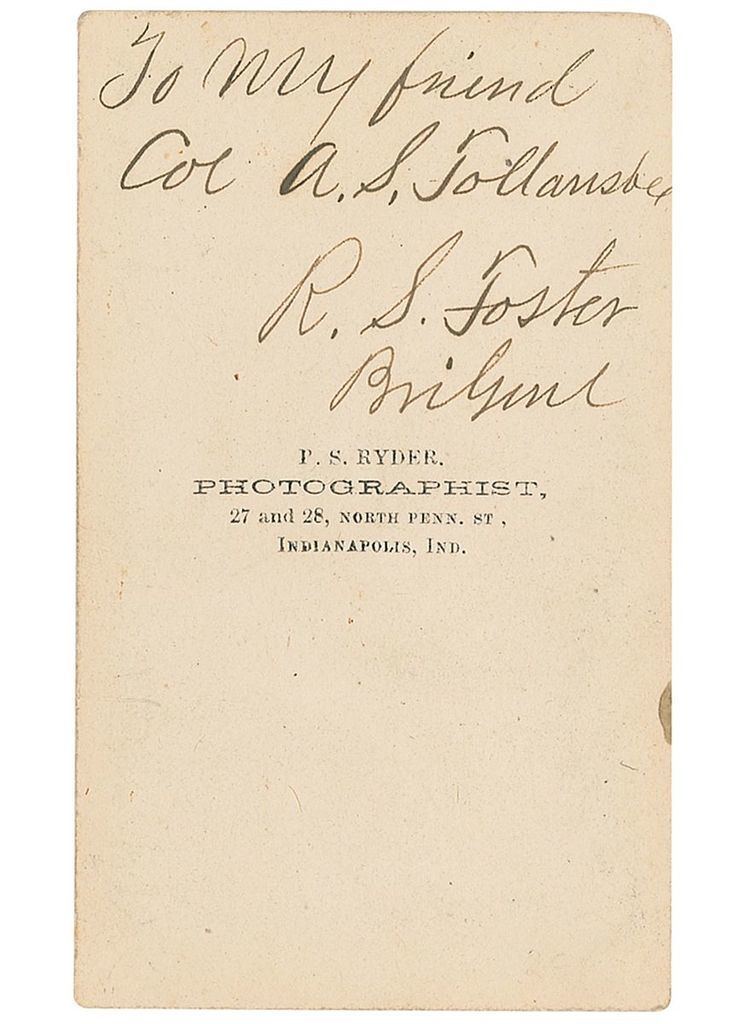Nickname(s) "Sandy" Years of service 1861-1865 | Name Robert Foster | |
 | ||
Born January 27, 1834Vernon, Indiana ( 1834-01-27 ) Battles/wars American Civil WarBattle of Rich MountainFirst Battle of WinchesterBattle of Port RepublicSiege of SuffolkSiege of Charleston HarborBermuda Hundred CampaignFirst Battle of Deep BottomSecond Battle of Deep BottomBattle of New Market HeightsBattle of Fort GreggBattle of Appomattox Court House Commands held 13th Indiana Infantry Regiment Other work United States Marshals Service Allegiance United States of America, Union | ||
Robert Sanford Foster (January 27, 1834 – March 3, 1903) was a Union general during the American Civil War. He played a prominent role in the siege of Petersburg and the Appomattox Campaign.

Biography
Foster was born in Vernon, Indiana in 1834. He moved to Indianapolis to learn the trade of being a tinner.
Foster enlisted as a private of Indiana volunteers at the onset of the Civil War. He was quickly promoted to captain in Lew Wallace's 11th Indiana Infantry Regiment and saw action at the Battle of Rich Mountain in western Virginia. Following these battles he was transferred to the 13th Regiment Indiana Infantry as major and shortly after promoted to colonel on April 30, 1862. Foster led his regiment during Stonewall Jackson's Valley Campaign of 1862 until his regiment was transferred to southeast Virginia in the vicinity of Suffolk.
Foster took command of a brigade in John J. Peck's division at Suffolk. When James Longstreet threatened Suffolk in 1863, Peck's garrison eventually rose to the size of three divisions. Foster commanded the 2nd Brigade in Michael Corcoran's 1st Division. During the subsequent Siege of Suffolk Foster's brigade manned the southwest front of the city's defenses. Following the lifting of the siege, Foster was promoted to brigadier general of volunteers on June 12, 1863.
Foster was transferred to Quincy A. Gillmore's X Corps near Charleston, South Carolina. Foster commanded the 1st Brigade of the Union forces on Folly Island during the siege of Charleston Harbor. During the early part of 1864 Foster commanded a brigade then division in Florida and when Gillmore's corps was transferred to the southeast Virginia, Foster was placed in command of the 1st Division, X Corps. During the Bermuda Hundred Campaign Foster served as chief of staff to Gillmore. He returned to command the 1st Division briefly before reverting to brigade command. He led his brigade during the first and second battles of Deep Bottom. He commanded the 2nd Division, X Corps at the Battle of New Market Heights.
During the winter of 1864/1865 the Army of the James was reorganized and Foster was placed in command of the 1st Division of the XXIV Corps now under the command of John Gibbon. Foster notably led his division in an assault on Fort Gregg during the Union breakthrough at Petersburg. Foster's division was part of the Union force which blocked Robert E. Lee's line of retreat at Appomattox Court House, leading to the Confederate surrender there. Foster was brevetted to major general of U.S. volunteers on March 13, 1865.
After the culmination of fighting Foster served as a member of the commission which tried the Lincoln Conspirators. He resigned from the army in September 1865. Foster returned to Indiana where he died in Indianapolis in 1903.
